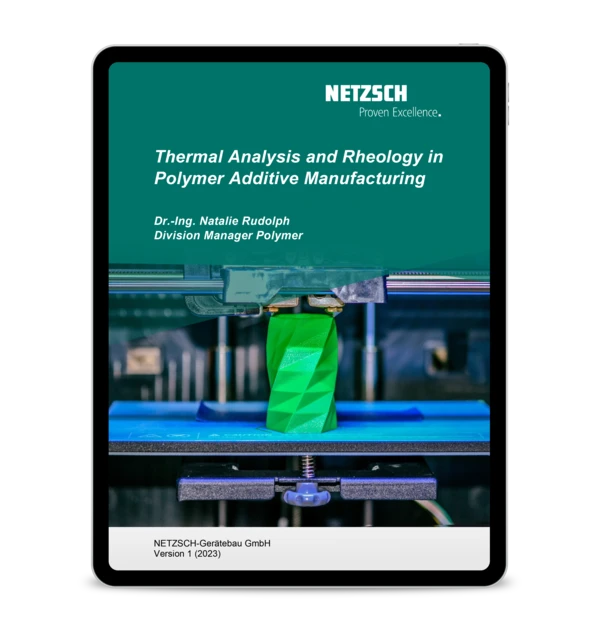
31.01.2022 by Aileen Sammler, Dr. Natalie Rudolph
Материаловедение в аддитивном производстве: Влияние наполнителей при экструзии материалов - анализ лазерной вспышки
В прошлом выпуске мы рассказали о влиянии наполнителей на реологию и обработку. Сегодня мы поговорим о том, как такие наполнители могут влиять на свойства деталей, а также на их обработку с помощью лазерного анализа вспышки (LFA).
В прошлом выпуске мы рассказали о влиянии наполнителей на реологию и обработку. Сегодня мы поговорим о том, как такие наполнители могут влиять на свойства деталей, а также на их обработку с помощью лазерного анализа вспышки (LFA).
Тема этой недели:
Очень важно понимать влияние наполнителей на свойства материала, поскольку они влияют на обработку и свойства деталей. Как быстро плавится материал? Как выравниваются наполнители в печатной форсунке или напечатанной детали? Как это может повлиять на теплопроводность моей детали? Давайте узнаем это с помощью NETZSCH Laser Flash Analysis (LFA).
Узнайте о:
- Как наполнители выравниваются в филаменте, в сопле и во время печати
- Влияние диаметра филамента на выравнивание
- Как подготовить и измерить экструзионные образцы наполнителей с помощью LFA
- Почему определение тепловой диффузии имеет большое значение для ориентации печати и особенностей дизайна

Бесплатная электронная книга
Термический анализ и реология в аддитивном производстве полимеров
Откройте для себя секреты, лежащие в основе революционных возможностей АМ! Наша новая электронная книга глубоко погружается в суть АМ, раскрывая возможности надежных методов определения характеристик материалов, в частности термического анализа и реологии.
Больше применений аддитивного производства NETZSCH
Пропустили наш последний эпизод? Просто нажмите здесь!
Узнайте больше об аддитивном производстве, посмотрев наши серии на YouTube: #ambynetzsch - YouTube
В следующем видео мы расскажем о различных методах анализа, используемых для термореактивных материалов, отверждаемых ультрафиолетовым излучением.